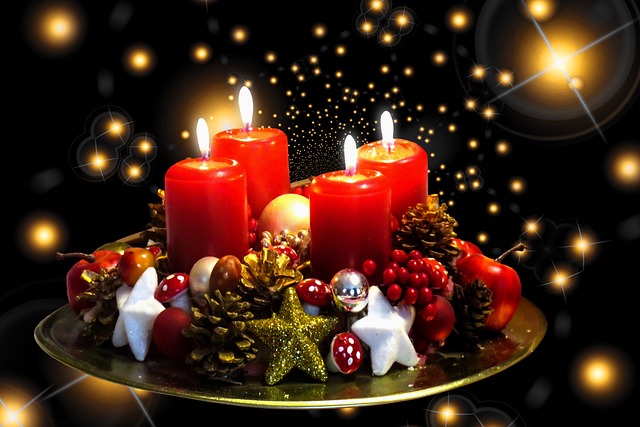“Beginning the Church’s liturgical year, Advent (from, ‘ad-venire’ in Latin or ‘to come to’) is the season encompassing the four Sundays (and weekdays) leading up to the celebration of Christmas” (The United States Conference of Catholic Bishops website).
It’s probably safe to say that the onset of Advent each year thrusts many of us immediately – and far from gently – into the seasonal craziness we’ve come to know as preparation for Christmas. The seeds of this annual frenzy are sown by merchandisers for many weeks even before Advent begins, with “Black Friday” ads commencing as early as October.
Perhaps we can consider some changes this year so that our approach during Advent is far more spiritual and far less commercial. A good starting point is the realization that Advent serves not only one spiritual purpose but two. Yes, it does lead us up to Christmas, but that was the first coming of Jesus, His arrival on earth.
A further quote from the USCCB may help to clarify: “The Advent season is a time of preparation that directs our hearts and minds to Christ’s second coming at the end of time and to the anniversary of Our Lord’s birth on Christmas. From the earliest days of the Church, people have been fascinated by Jesus’ promise to come back. But the scripture readings during Advent tell us not to waste our time with predictions. Advent is not about speculation. Our Advent readings call us to be alert and ready, not weighted down and distracted by the cares of this world (Lk 21:34-36).”
It is this “second coming at the end of time” which may take us off guard and possibly out of our comfort zone. Yet it is focusing on that second coming of Jesus that should help us to avoid giving in to cultural temptations toward over-consumption and superficiality during this season.
It may be helpful to recall the prayer which the celebrant recites during the Communion Rite at each Mass: “Deliver us, Lord, we pray, from every evil, and graciously grant peace in our days, that, by the help of your mercy, we may be always free from sin and safe from all distress, as we await the blessed hope and the coming of our Savior, Jesus Christ.”
So at every Mass in which we participate, we are reminded that indeed we are to be awaiting – not in dread but in joy – “the blessed hope and the coming of our Savior, Jesus Christ.” The message is simple yet challenging: strive to keep our priorities in right order.
Contemplating the things of heaven and raising our thoughts to preparing for the second coming of Jesus can afford us a far loftier – and at the same time more down to earth – perspective as we reconsider such aspects of the holiday season as gift-giving and hosting festivities.
Toward this end, the USCCB’s Advent website can be of great assistance, offering a number of resources to point us in the right direction. Some of these may be very familiar; others may inspire us to introduce a new tradition or two into our annual celebrations:
~ a printable Advent calendar featuring feast days, family activities, and prayer suggestions
~ Advent wreath information and prayer
~ the ancient, beautiful “O” Antiphons expressing our longing for the Messiah
~ a very brief video on the Franciscan roots of the Nativity scene, including a Blessing prayer
~ a Blessing for the Christmas Tree
~ commentary on the proper prayers of the Mass for Sundays in Advent
~ an outline of the Festival of Lessons and Carols, “a service of Scripture and song”
~ a link to the Scriptural method of Lectio Divina for Advent
The Universal Norms on the Liturgical Year and the General Roman Calendar reiterate Advent’s “twofold character … a time of preparation for the Solemnities of Christmas, in which the First Coming of the Son of God to humanity is remembered, and likewise a time when, by remembrance of this, minds and hearts are led to look forward to Christ’s Second Coming at the end of time. For these two reasons, Advent is a period of devout and expectant delight” (39).
May this season of “devout and expectant delight” find our hearts, at its conclusion, rejoicing in our commemoration of the first coming of our Savior, and filled with hopeful anticipation of the second.










